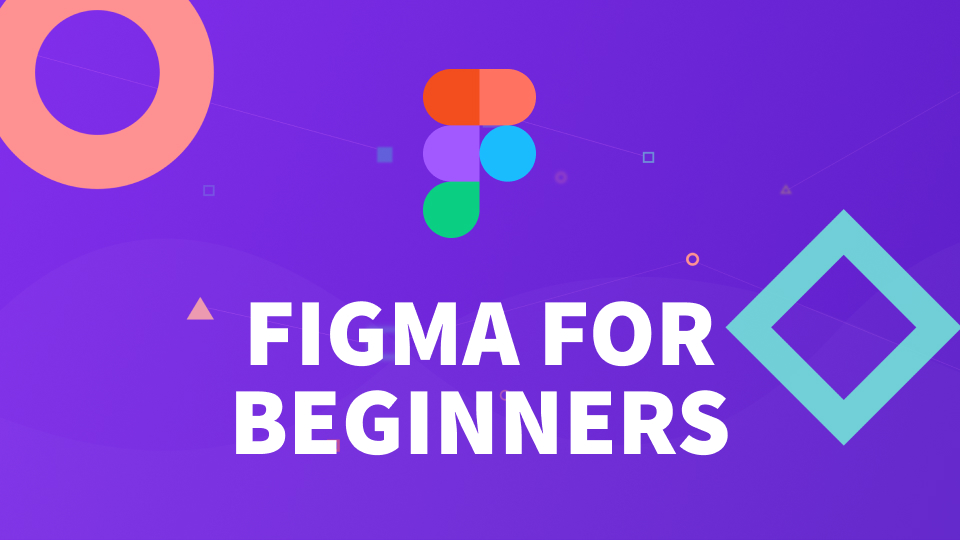Backend Development: Understanding Server-Side Programming

In today’s digitally-driven world, the demand for skilled developers is at an all-time high. Among the various programming fields, backend development is crucial yet often overlooked by aspiring coders. This article dives into the fundamentals of backend development, exploring popular languages and frameworks that can launch your coding career and set you on the path to success.
What is Backend Development?
Backend development refers to the server-side part of applications. It encompasses everything that happens behind the scenes to ensure the functionality of a website or application. While frontend development focuses on the visible portions of an application—the user interfaces and user experiences—backend development handles the logic, database interactions, authentication processes, server configurations, and more.
In simpler terms, while the frontend is what users interact with, the backend is what makes those interactions possible. It involves working with databases, server architecture, APIs, and ensuring everything operates smoothly and securely.
Why Pursue a Career in Backend Development?
There are several compelling reasons to consider a career in backend development:
High Demand: According to the U.S. Bureau of Labor Statistics, jobs in software development, particularly backend roles, are projected to grow 22% from 2020 to 2030, much faster than average.
Diverse Opportunities: Backend developers can find roles in various sectors, including finance, healthcare, e-commerce, and entertainment, offering diverse work environments and challenges.
Problem-Solving: Backend developers play a significant role in solving complex problems, making the job rewarding for those who enjoy analytical thinking and creativity.
Foundation for Full-Stack Development: Learning backend development sets a solid foundation for transitioning into full-stack development, where you can handle both frontend and backend coding.
Popular Languages for Backend Development
![]()
Several programming languages are commonly used in backend development. Each has its characteristics and strengths:
1. Python
Python is one of the most popular programming languages due to its simplicity and versatile applications. Its readability makes it an excellent choice for beginners. The power of Python is evident in frameworks like Django and Flask, which streamline backend development by providing robust features, including built-in authentication and ORM (Object-Relational Mapping) support.
2. JavaScript (Node.js)
While traditionally known for frontend development, JavaScript has made significant inroads into backend development with the advent of Node.js. Node.js enables developers to use JavaScript on the server side, allowing seamless integration between backend and frontend. Frameworks such as Express.js enhance its capabilities, making it powerful for API development and routing.
3. Ruby
Ruby is another language that is favored for its elegant syntax and powerful framework, Ruby on Rails. Rails offers convention over configuration, allowing developers to build applications quickly and efficiently. Its focus on simplicity and productivity has garnered a loyal following among startups and developers.
4. Java
Java has long been a staple in backend development, especially for large-scale enterprise applications. Its platform independence and strong community support make it robust. Frameworks like Spring and Hibernate provide extensive functionalities, making it a great choice for complex applications and microservices architecture.
5. PHP
PHP is a server-side scripting language that's have been around for decades. It's widely used for web development and works seamlessly with databases like MySQL. Frameworks such as Laravel and Symfony enhance PHP’s capabilities, providing developers with tools to build secure and scalable web applications.
Understanding Frameworks
Backend frameworks are essential for developers as they provide pre-built components that simplify coding tasks. They enforce best practices and help in managing server-side applications effectively. Here’s a closer look at some of the most popular backend frameworks:
1. Django (Python)
Django is a high-level Python framework that encourages rapid development and clean design. It comes with built-in features, such as an admin panel, user authentication, and ORM. The Django Rest Framework is particularly popular for building RESTful APIs and provides robust features for serialization and authentication.
2. Express.js (Node.js)
Express.js is a minimal yet flexible web application framework for Node.js. It simplifies the process of building robust APIs and web applications. With middleware support, developers can easily add additional functionalities such as logging, authentication, and error handling.
3. Ruby on Rails
Rails simplifies the process of developing complex applications by providing a set of conventions and structures. Its huge library of gems allows developers to easily integrate third-party functionalities.
4. Spring (Java)
Spring is an extensive framework for Java providing a comprehensive programming and configuration model. It's particularly well-suited for large-scale applications. Spring Boot is a popular initiative within the Spring ecosystem, offering rapid application development with minimal configuration.
Databases in Backend Development
A backend developer’s toolkit isn’t complete without a strong understanding of databases. There are two main categories of databases: relational databases and NoSQL databases.
1. Relational Databases
Relational databases, such as MySQL and PostgreSQL, store data in structured tables and use SQL (Structured Query Language) for data manipulation. These databases are ideal for applications requiring complex queries and transactions.
2. NoSQL Databases
NoSQL databases like MongoDB and Cassandra store data in a more flexible, unstructured manner, making them suitable for applications dealing with a large volume of data and high user loads. They allow developers to scale easily and adapt to various data types.
APIs: The Backbone of Modern Applications
APIs (Application Programming Interfaces) are essential for backend development. They allow different software systems to communicate with each other, facilitating data exchange and enhancing functionality.
REST vs. GraphQL
REST (Representational State Transfer): REST is an architectural style that uses standard HTTP methods for communication. It is widely used due to its simplicity and scalability.
GraphQL: Developed by Facebook, GraphQL is an alternative to REST that allows clients to request only the data they need. This results in more efficient data retrieval and less over-fetching.
Security in Backend Development
Security is a critical aspect of backend development. The backend is responsible for protecting sensitive user data and preventing unauthorized access. Here are some essential practices:
- Input Validation: Always validate user inputs to prevent SQL injection and other attacks.
- Authentication and Authorization: Implement strong authentication mechanisms (e.g., OAuth 2.0) to control access to your application.
- Data Encryption: Use encryption to secure sensitive data both in transit and at rest.
- Regular Updates: Keep your software and dependencies up to date to protect against vulnerabilities.
Tools and Resources for Backend Developers
Embarking on a backend development journey requires the right tools and resources. Here are some that can help you enhance your skills:
- Version Control Systems: Git is essential for tracking changes in your code and collaborating with other developers.
- Integrated Development Environments (IDEs): Use IDEs like Visual Studio Code or JetBrains IntelliJ IDEA for a streamlined coding experience.
- Learning Platforms: Websites like Codecademy, freeCodeCamp, and Udemy offer courses on various backend technologies.
Building a Portfolio
As you learn and grow your backend development skills, building a portfolio is crucial for showcasing your projects to potential employers. Here are some tips:
Start with Personal Projects: Develop small-scale applications to practice your skills. This can include a blog platform, a to-do list app, or an online store.
Contribute to Open Source: Participate in open-source projects on platforms like GitHub to gain experience and collaborate with other developers.
Document Your Work: Write about your projects on platforms like Medium or your personal blog. This not only showcases your work but also demonstrates your communication skills.
Networking and Community Engagement
Networking is pivotal in the tech industry. Engaging with the developer community can open doors to job opportunities and collaborations. Here are a few ways to connect:
Attend Meetups and Conferences: Participate in local and online tech meetups, webinars, and conferences like PyCon or React Summit to connect with professionals and learn from experts.
Join Online Communities: Platforms like Stack Overflow and Reddit have vibrant tech communities where you can ask questions, share knowledge, and collaborate on projects.
Follow Industry Leaders: Engage with thought leaders and follow relevant discussions on platforms like Twitter and LinkedIn.
The Future of Backend Development
As technology evolves, so does the landscape of backend development. Emerging trends such as microservices architecture, serverless computing, and artificial intelligence are shaping the future of how applications are built and deployed.
Understanding these trends will not only keep you relevant in the industry but also make you a valuable asset to any organization. Stay curious, keep learning, and adapt to the changing technological landscape.
Conclusion
Backend development is a rewarding field with endless opportunities for growth and innovation. By mastering backend programming languages, frameworks, and best practices, you can build powerful applications that drive modern technology. Whether you’re just starting or looking to expand your expertise, the journey into backend development can lead to a fulfilling and lucrative career.
Now is the perfect time to dive in and explore the world of server-side programming—who knows what you might create? Remember to leverage the resources mentioned, engage with the community, and never stop learning.
Explore, build, and excel in backend development! Your coding career awaits.
If you found this content useful, please do well to share:
Blog Search
Latest Posts

Unlocking Your Migration Dreams: From Osun Tech Space to Global Spaces
October 13, 2025Gain visa insights, tech skills, & funding for global success. Join Our Webinar with VESTI on October 18th and unlock your migration dreams for a global fut

Unlock Your Tech Future: Seize a 30% Discount on Professional Tech Courses at Madros Technologies!
September 6, 2025Ready for a career change? Madros Technologies offers 30% OFF expert-led tech training. Master in-demand skills like Software Engineering, Digital Marketing, Da

Quick Window Offer: Extended August Discount Offer – Your Tech Dreams, 40% Off!
August 12, 2025Transform your future with 40% off Madros Technologies courses! Gain job-ready skills in coding, design, and digital marketing fields. This is an extended disco

Your Tech Dream: Closer Than You Think (And Half Off!)
July 5, 2025Unlock your tech potential with Madros Technologies! Get 50% off cutting-edge courses & transform your future. Your dream career starts here.

Using Figma: Tutorial for Beginner Product Designers
June 7, 2025A beginner’s walkthrough of Figma for prototyping and design collaboration

Top 5 Video Editing Software for Beginners
June 7, 2025Discover the best tools for newbie editors to create stunning videos easily
